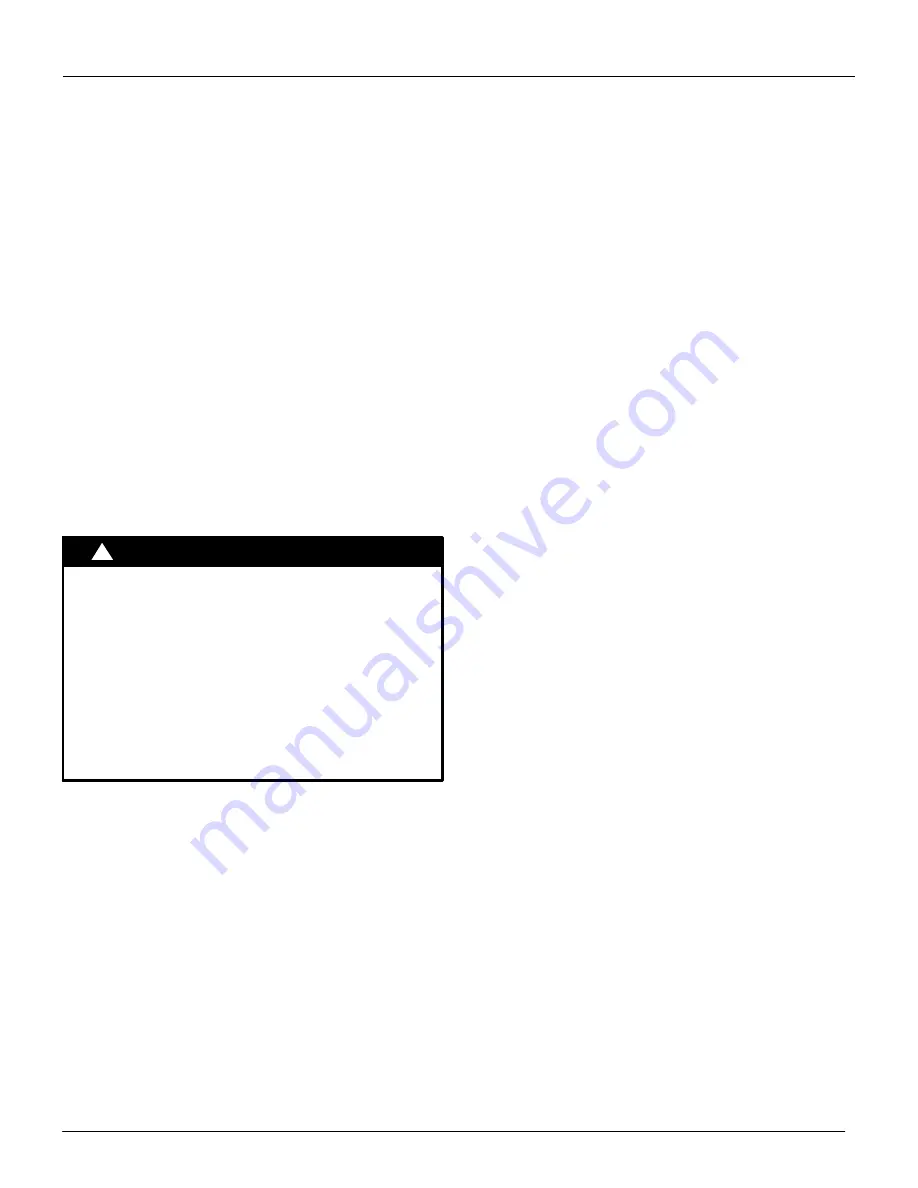
441 01 2314 06
Specifications are subject to change without notice.
12
6. Masonry Chimney Venting
Chimney Inspection
All masonry chimney construction must conform to Standard
ANSI/NFPA 211
−
2006 and to any state or local codes applicable.
The chimney must be in good condition and a complete chimney
inspection must be conducted prior to furnace installation. If the in-
spection reveals damage or abnormal conditions, make neces-
sary repairs or seek expert help. See “The Chimney Inspection
Chart”
Figure 6
. Measure inside area of tile
−
liner and exact height
of chimney from the top of the chimney to the highest appliance
flue collar or drafthood outlet.
Connector Type
To reduce flue gas heat loss and the chance of condensate prob-
lems, the vent connector must be double
−
wall Type B vent.
Venting Restrictions for Chimney Types
Interior Chimney
−
has no sides exposed to the outdoors below
the roofline. All installations can be single furnace or common
vented with another draft hood equipped Category
I
appliance.
Exterior Chimney
−
has one or more sides exposed to the out-
doors below the roof line. All installations with a 99% Winter De-
sign Temperature* below 17
°
F (
−
8
°
C) must be common vented
only with a draft hood equipped Category I appliance.
*
The 99% Winter Design Dry
−
Bulb (db) temperatures are
found in the 2005 ASHRAE Fundamentals Handbook CD
and Chapter 28.
CARBON MONOXIDE POISONING, FIRE AND
EXPLOSION HAZARD
Failure to follow this warning could result in
personal injury, death and/or property damage.
These furnaces are CSA (formerly AGA and CGA)
design
−
certified for venting into exterior clay
tile
−
lined masonry chimneys with a factory
accessory Chimney Adapter Kit. Refer to the
furnace rating plate for correct kit usage. The
Chimney Adapter Kits are for use with ONLY
furnaces having a Chimney Adapter Kit number
marked on the furnace rating plate.
!
WARNING
If a clay tile
−
lined masonry chimney is being used and it is exposed
to the outdoors below the roof line, relining might be required.
Chimneys shall conform to the Standard for Chimneys, Fire-
places, Vents, and Solid Fuel Burning Appliances ANSI/NFPA
211
−
2006 in the United States and to a Provincial or Territorial
Building Code in Canada (in its absence, the National Building
Code of Canada) and must be in good condition.
U.S.A.
−
Refer to Sections 13.1.9 or 13.2.20 of the NFGC or the au-
thority having jurisdiction to determine whether relining is required.
If relining is required, use a properly sized listed metal liner,
Type
−
B
vent, or a listed alternative venting design.
This model (*8DNL) is NOT listed for use with Chimney Adapter
kits. A multi
−
position furnace in the downflow position that is listed
for use with one of the Chimney Adapter Kits NAHA001DH or
NAHA002DH may be used with a masonry chimney.
Canada (and U.S.A.)
−
This furnace is permitted to be vented into a
clay tile
−
lined masonry chimney that is exposed to the outdoors
below the roof line, provided:
1. Vent connector is Type
−
B double
−
wall, and
2. This furnace is common vented with at least 1 draft hood
−
equipped appliance, and
3. The combined appliance input rating is less than the maxi-
mum capacity given in Table A, and
4. The input rating of each space
−
heating appliance is greater
than the minimum input rating given in Table B for Masonry
Chimneys for the local 99% Winter Design Temperature.
Chimneys having internal areas greater than 38 square
inches (245 sq. cm) require furnace input ratings greater
than the input ratings of these furnaces. See footnote at bot-
tom of Table B, and
5. The authority having jurisdiction approves.
If all of these conditions cannot be met, an alternative venting de-
sign shall be used, such as a listed chimney
−
lining system, or a
Type
−
B vent.














































